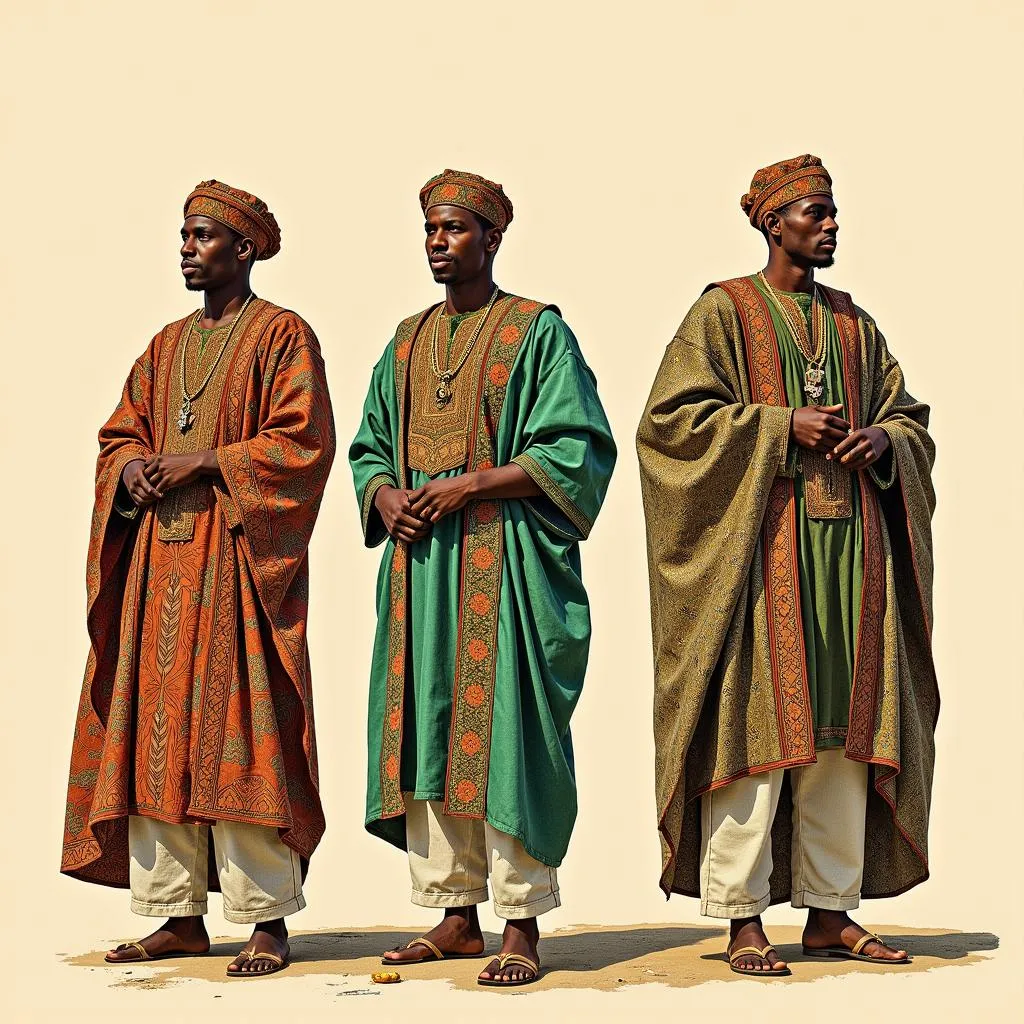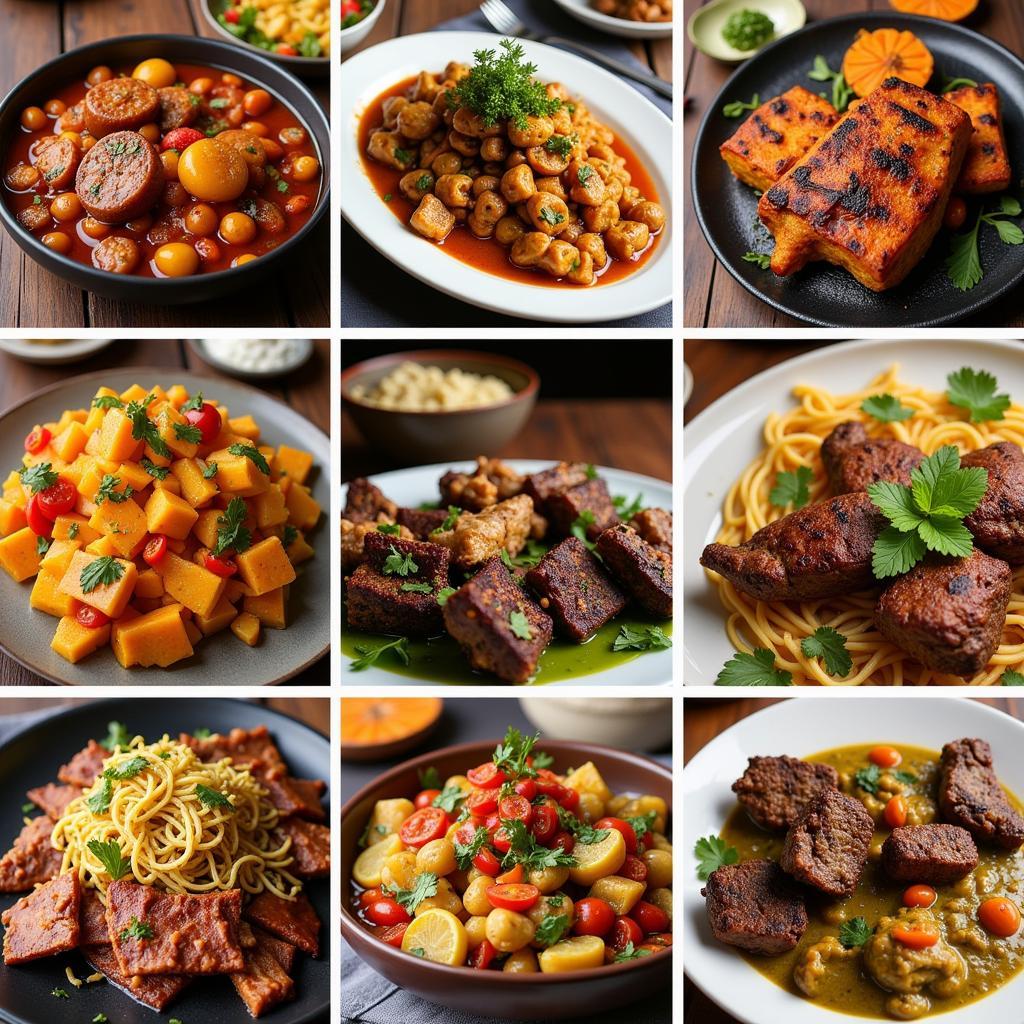A Guide to Men’s African Dress: Images, Styles, and Significance
African men’s dress is a vibrant tapestry of colors, patterns, and styles, reflecting the rich cultural heritage and diverse traditions of the continent. From the intricate beadwork of the Maasai to the bold prints of the Yoruba, African attire is a testament to creativity and craftsmanship. This comprehensive guide explores the captivating world of men’s African dress, offering insights into its historical context, artistic expression, and the powerful symbolism it embodies.
Exploring the Diversity of Men’s African Dress
Men’s African dress encompasses a vast spectrum of styles, each with its own unique story to tell. These garments are not just about covering the body, but also serve as a means of conveying identity, status, and belonging.
Here are some of the prominent styles of men’s African dress:
- Dashiki: Originating from West Africa, the dashiki is a popular choice for men’s clothing. This loose-fitting, brightly colored tunic is often adorned with intricate embroidery or patterns.
- Kente: This handwoven cloth, originating from Ghana, is known for its intricate patterns and vibrant colors. Kente is often used to create ceremonial garments, but it can also be incorporated into everyday clothing.
- Buba: A long, flowing robe, the buba is a common garment in West Africa. It is often worn with matching pants, and is often embellished with elaborate embroidery or beadwork.
- Agbada: This is a traditional Yoruba men’s garment consisting of a long, wide-sleeved robe worn over a long, fitted tunic. It is often made of rich fabrics like brocade or silk and is often accessorized with a matching cap and beads.
- Kanzu: This long, white robe is a common garment in East Africa, especially in countries like Kenya and Tanzania. The kanzu is worn as a symbol of modesty and is often worn with a turban or hat.
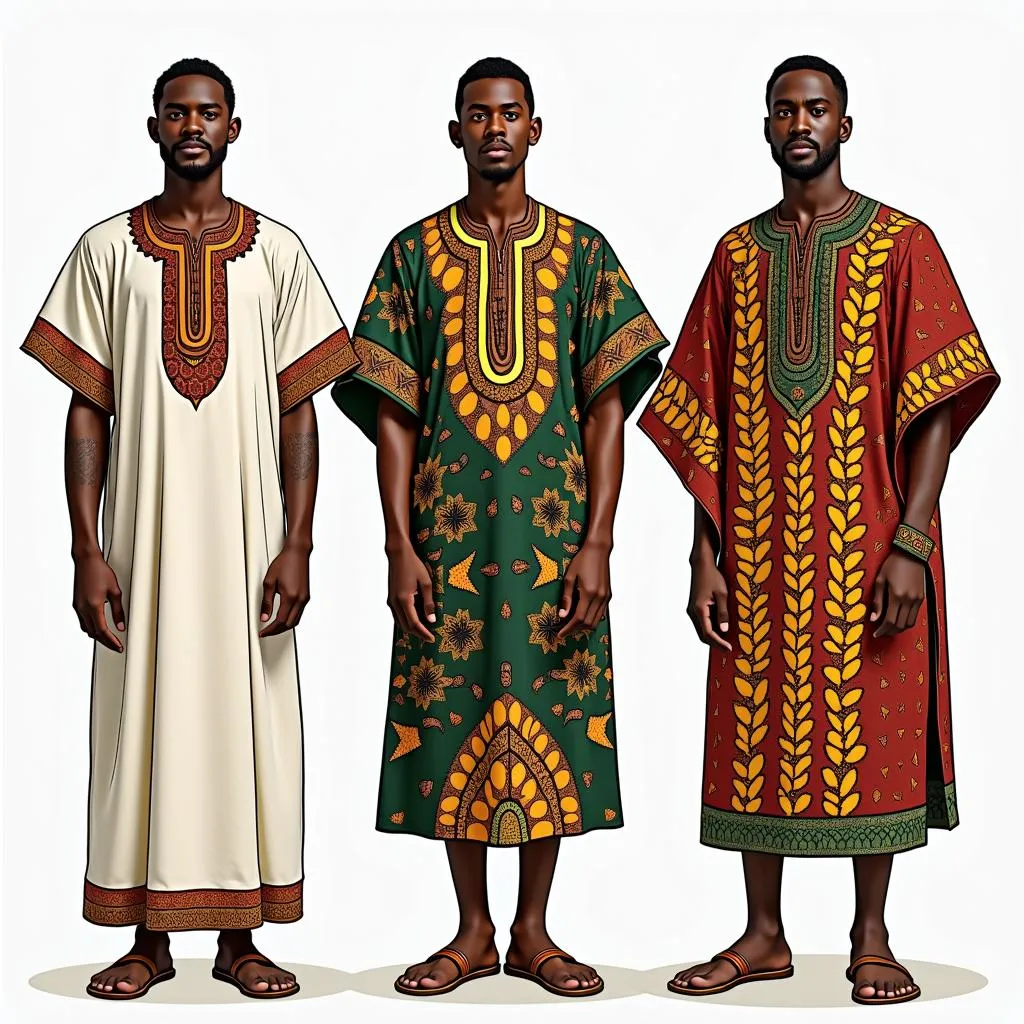 Men wearing various styles of African dress
Men wearing various styles of African dress
The Significance of Men’s African Dress
Beyond aesthetics, African men’s dress carries profound cultural and social significance. It is often used to:
- Express identity: Certain styles of dress are associated with specific ethnic groups or tribes, providing a visual representation of one’s cultural heritage.
- Celebrate events: Traditional African dress is frequently worn during special occasions, such as weddings, funerals, and festivals. It signifies respect for tradition and enhances the festive atmosphere.
- Convey status: In some cultures, the fabric, design, or embellishments of a garment can signify a person’s wealth, social standing, or position within the community.
- Showcase craftsmanship: African men’s dress is a testament to the exceptional skills of African artisans, who have honed their craft over generations.
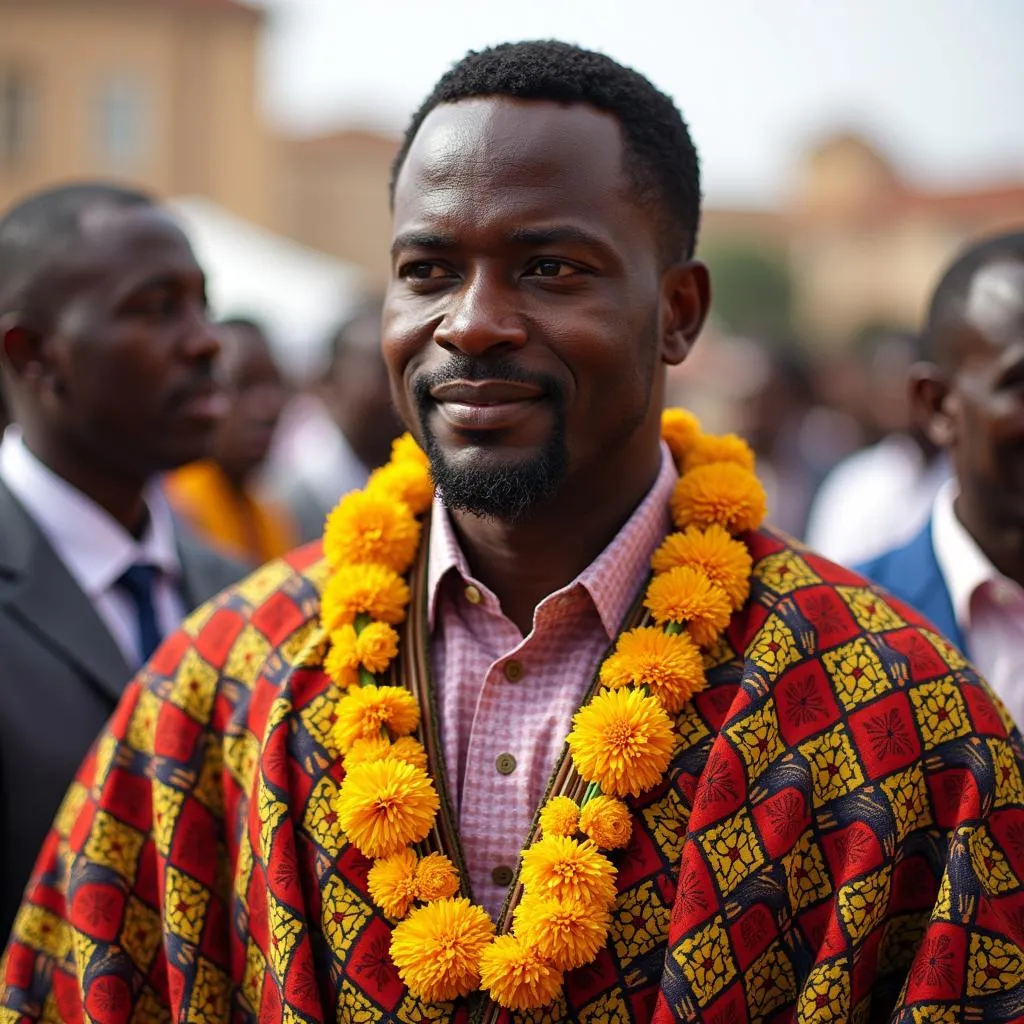 A man wearing traditional African clothing during a wedding ceremony
A man wearing traditional African clothing during a wedding ceremony
The Evolution of Men’s African Dress
Men’s African dress has evolved over time, blending tradition with contemporary influences. While the core elements of traditional garments remain, modern designers are reinterpreting and reinterpreting these styles to create fashionable and innovative pieces. This fusion of traditional and contemporary aesthetics reflects the dynamic nature of African culture.
According to Dr. Amina K. Mgeni, an expert in African fashion and textiles:
“African fashion is undergoing a renaissance. Designers are embracing their cultural heritage while incorporating modern techniques and materials to create unique and stylish garments.”
The Importance of Respect and Appreciation
When exploring the world of African men’s dress, it’s crucial to approach it with respect and appreciation. Avoid cultural appropriation, which involves borrowing elements from another culture without understanding their significance or seeking proper consent. Instead, engage with the rich history and cultural context of African dress to gain a deeper understanding and appreciation for its beauty and meaning.
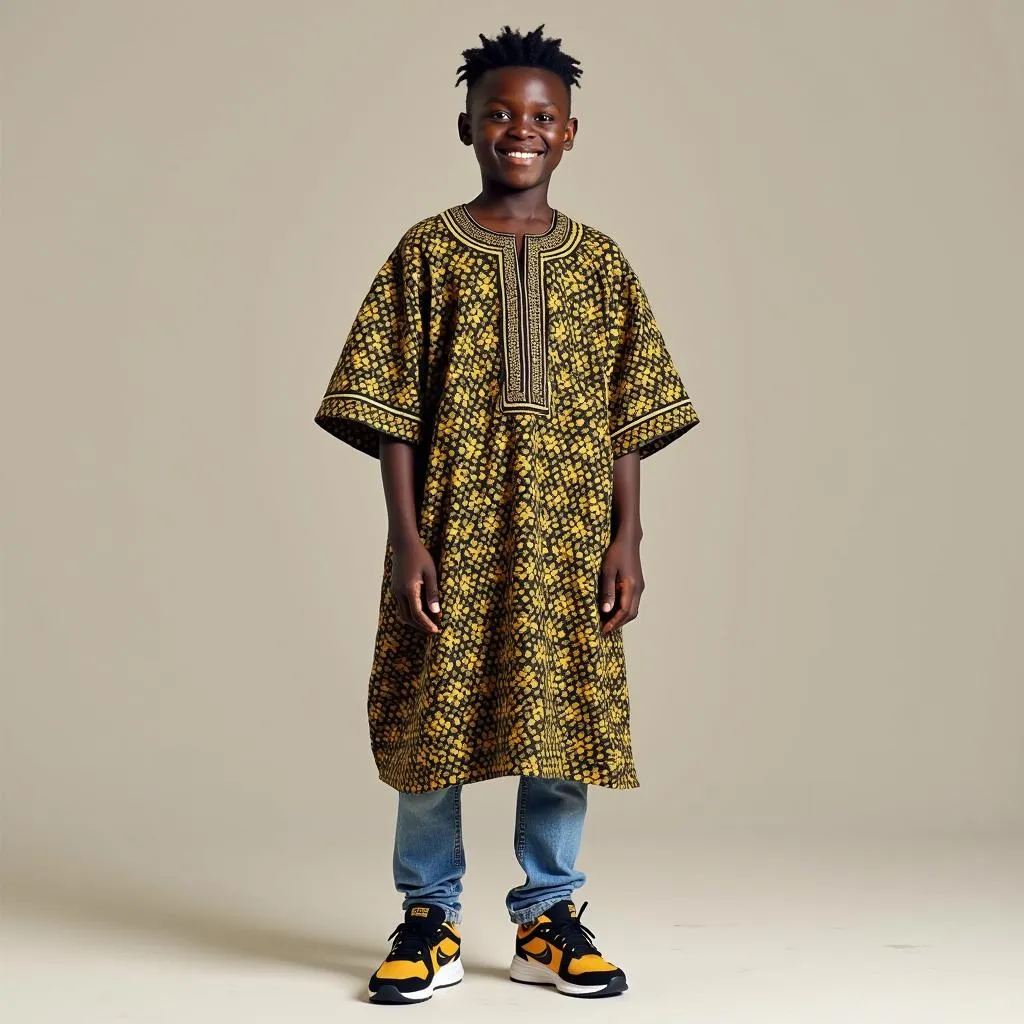 A man wearing a dashiki with modern street style
A man wearing a dashiki with modern street style
Frequently Asked Questions (FAQs)
Q: What are some common accessories worn with African men’s dress?
A: African men’s dress is often accessorized with items such as hats, beads, bracelets, and belts. These accessories can add a touch of elegance and cultural significance to the overall look.
Q: Where can I buy African men’s clothing?
A: African men’s clothing can be purchased online from a variety of retailers, including specialized stores that focus on African apparel. You can also find local boutiques and artisans who offer handcrafted garments.
Q: Are there specific occasions where African men’s dress is worn?
A: African men’s dress is commonly worn during special occasions such as weddings, festivals, and ceremonies. It is also increasingly becoming a popular choice for everyday wear, reflecting a growing sense of cultural pride.
Q: What are the key things to consider when choosing African men’s dress?
A: When choosing African men’s dress, it’s important to consider the occasion, the fabric, and the style. It’s also essential to be respectful of cultural traditions and avoid cultural appropriation.
Conclusion
Men’s African dress is a vibrant and inspiring testament to the rich cultural heritage and diverse traditions of the continent. It is a form of artistic expression, a symbol of identity, and a reflection of the enduring craftsmanship of African artisans. By exploring the world of African men’s dress, we gain a deeper appreciation for the beauty, significance, and enduring relevance of this unique aspect of African culture.
